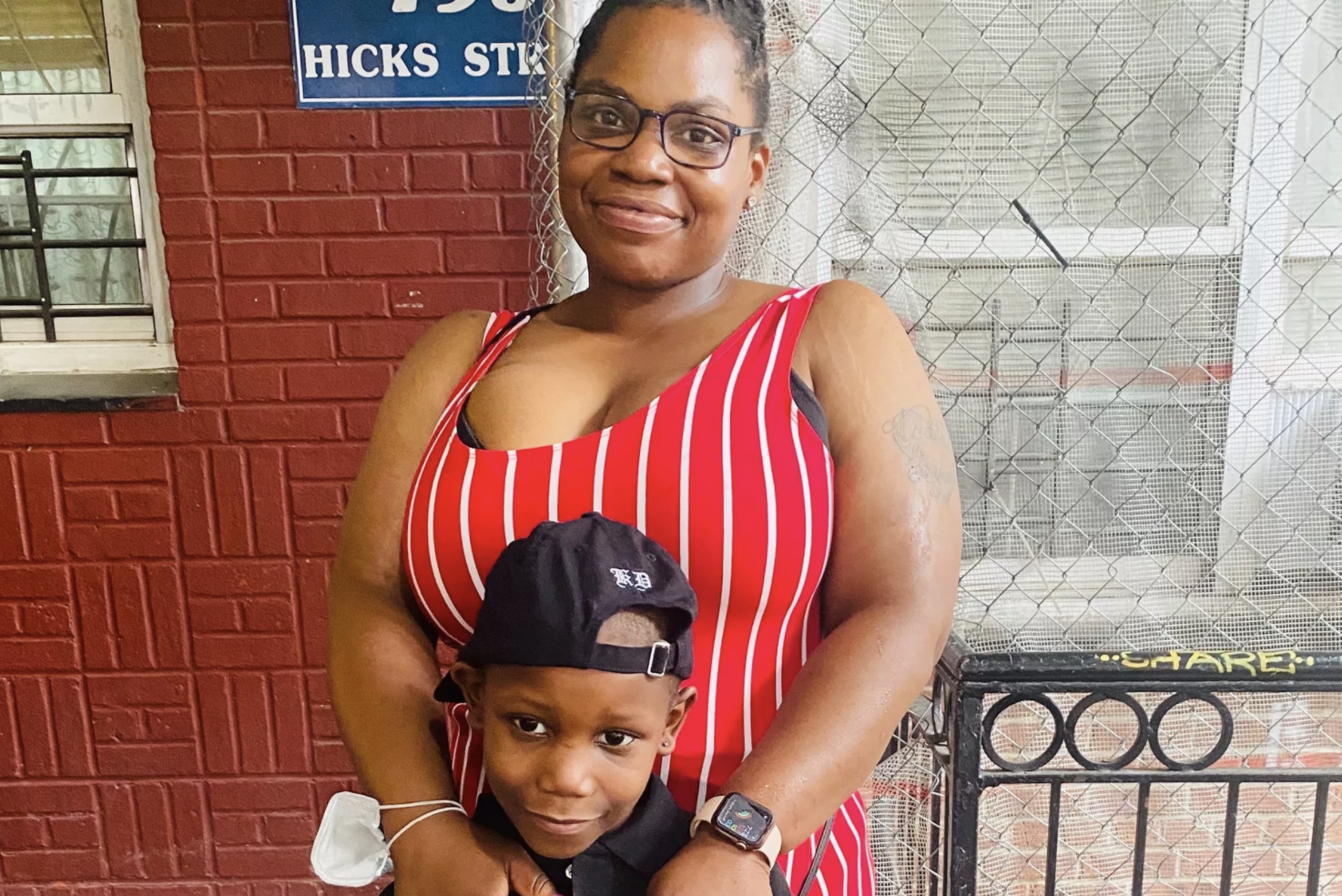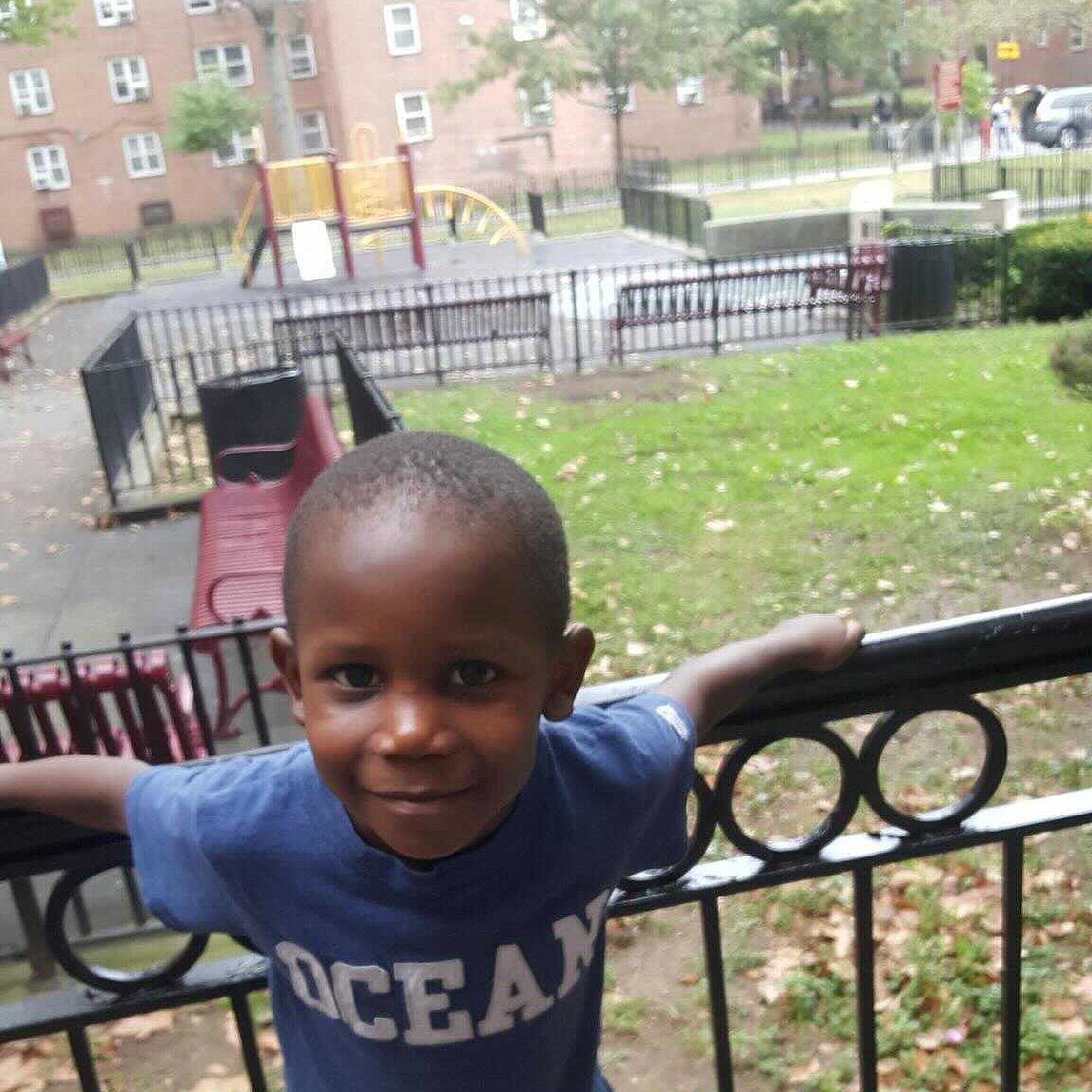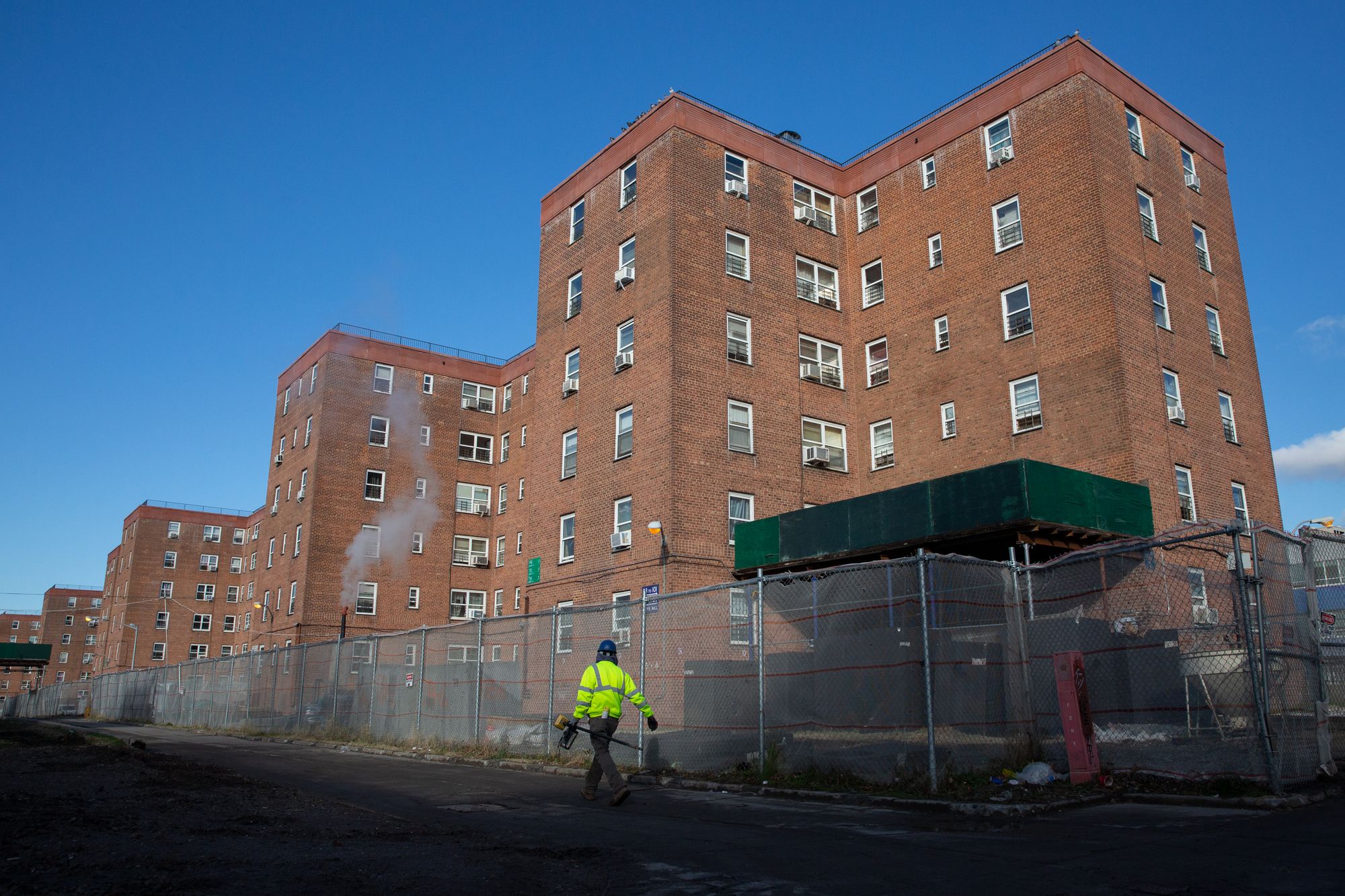NYCHA Falsely Certified This Brooklyn Child’s Apartment Lead-Free. Now He Has Lead Poisoning — and He’s Not Alone


By Greg B. Smith, THE CITY. This article was originally published
by THE CITY

“When people make mistakes and then cover those mistakes up with lies upon lies, that’s when people get really hurt,” said Sherron Paige, whose 7-year-old son, Kyan, has grown up in a lead-tainted apartment in the Red Hook Houses.
The day in July 2017 the doctor called Sherron Paige to tell her that her son, Kyan, had registered an alarming level of lead in his blood, the child was just 4 years old.
At the time, Paige had no way of knowing her son had become a very young victim of alleged deception by a city official.
The New York City Housing Authority previously certified that the Brooklyn apartment where Kyan had lived since birth had been cleaned of lead paint. A licensed NYCHA supervisor signed off on the job, THE CITY has learned.
That supervisor, however, had never been to the apartment in Red Hook Houses and never reviewed the inspection reports, according to the city Department of Investigation and sources familiar with the matter.
He’d simply signed paperwork certifying that an apartment he’d never seen was lead-free — exempting NYCHA from having to inspect the unit going forward as required by local law and federal regulations, according to the records and the sources.
The consequences became clear once Kyan’s doctor notified the city Department of Health & Mental Hygiene (DOHMH) that the child had registered a blood-lead level of 12 micrograms per deciliter — far above the cutoff of 5 micrograms deemed unsafe by the U.S. Centers for Disease Control and Prevention.

DOHMH inspectors visited the apartment to check for the presence of lead paint following Kyan’s diagnosis. Using a handheld X-ray-like device known as an XRF analyzer, they discovered lead throughout the apartment NYCHA had declared safe, records reviewed by THE CITY show.
Elevated blood-lead levels are known to hamper the cognitive development of young children. Paige noted Kyan’s speech development was behind his age group and he has displayed behavioral issues.
“Sometimes people make mistakes and bad things happen. That’s life,” Paige told THE CITY. “But when people make mistakes and then cover those mistakes up with lies upon lies, that’s when people get really hurt. And that’s when people should pay the highest price.”
Barbara Brancaccio, a NYCHA spokesperson, declined to discuss NYCHA’s handling of lead paint inspections in the family’s apartment, stating, “Apartment specific information is not public. Additionally, this apartment is involved in pending litigation and NYCHA cannot comment.”
NYCHA Lies Hurt Kids
Over the last five years, evidence has surfaced of young NYCHA residents with dangerously high levels of lead in their blood. Year after year, NYCHA management deflected blame and downplayed the scope of the crisis.
Probes by the city Department of Investigation and the Manhattan U.S. Attorney revealed the authority failed to perform required lead paint inspections for years — and lied about it to federal authorities.
Last month, DOI found for the first time fraudulent actions by NYCHA personnel occurred in apartments where children were exposed to toxic lead paint.
DOI revealed the duplicity behind NYCHA’s push to exempt apartments like Kyan’s from lead inspection: top managers had for years used false signatures to obtain exemptions. Investigators determined this deceit occurred in at least 323 apartments, and they believed many more were affected.
And actual harm was done: DOI Commissioner Margaret Garnett said her investigators cross-referenced health and other records, and found that 19 children living in 18 of the 323 exempted apartments became lead poisoned.
Garnett and NYCHA declined to share the identities of those children. But THE CITY has learned that Kyan was one of them.
THE CITY also learned that two years ago, NYCHA was twice warned that the exemption program had serious problems, yet did little to address them.
Records reviewed and interviews conducted by THE CITY found:
- In March 2018, while the false-signature scheme was underway, a NYCHA manager insisted to a Brooklyn tenant that her apartment had been officially deemed free of lead. State health inspectors later discovered lead paint inside the apartment.
- In August 2018, DOI privately warned NYCHA to retest all its exempted apartments, disclosing that investigators had discovered problems with the program during an ongoing probe. NYCHA declined to do so.
- Only now is NYCHA going back and re-testing the 323 apartments DOI falsely identified as eligible for exemption. Preliminary test results have already uncleared lead paint in five apartments NYCHA previously declared “cleared” of the toxin, THE CITY has learned.
For an apartment to make the exemption list, a NYCHA supervisor who holds a certificate from the U.S. Environmental Protection Agency (EPA) must inspect the unit and certify that it was properly cleaned of lead paint.
For years, two top managers of NYCHA’s lead paint unit forced supervisors with the required EPA training to sign off on apartments they had never actually visited, according to DOI.
“Our findings determined that between 2013 through 2018, for all of the exemptions obtained through abatement, there was no EPA-certified supervisor as is required by federal law,” Diane Struzzi, a DOI spokesperson, wrote in response to THE CITY’s questions.
“The total number of exemptions by abatement obtained during this period is likely greater than 323, but poor record keeping by NYCHA meant DOI could not determine the total number of exemptions obtained through abatement with certainty,” she added.
A History of Red Flags
All of this occurred while alarm bells were ringing all over about NYCHA’s failure to follow the law on lead paint inspections across its portfolio of 175,00 public housing apartments.
Lead paint was officially banned nationally in 1978. About 135,000 NYCHA apartments were built before that and likely are tainted by lead paint.
Local law requires all New York City landlords, including NYCHA, to inspect each apartment with a young child every year, while the U.S. Department of Housing & Urban Development (HUD) requires annual lead paint inspections of all public housing units — regardless of whether children live there.
NYCHA simply stopped performing all the required inspections in 2012, and continued an aggressive campaign to exempt hundreds of units from these required inspections.

But by March 2016, news reports had raised questions about NYCHA’s lead paint program and revealed the existence of an investigation by the Manhattan U.S. attorney.
In response, Mayor Bill de Blasio assured reporters that NYCHA had “a very aggressive inspection and abatement program,” claiming, “Any time we find a problem we abate it.”
Weeks later, the mayor privately learned this was not true.
NYCHA managers told him that for years the authority had not, in fact, been performing the required inspections. De Blasio opted to keep that damning revelation secret from tenants and the taxpaying public.
That changed in November 2017 when the mayor was forced to acknowledge this failure when DOI released a report revealing what he already knew: NYCHA had been lying about its lead paint inspection practices for years.
Despite the release of DOI’s 2017 report, the false signature scheme to get apartments exempted went on as if nothing had happened, DOI officials confirmed to THE CITY.
In March 2018, state health officials launched random inspections of NYCHA apartments after Gov. Andrew Cuomo began criticizing living conditions in public housing. Soon the state discovered lead paint in 23 units — including three that had been exempted from inspection after being deemed “lead free” by NYCHA.
A “cleaned” apartment at the Berry Houses in Staten Island registered a level of 72 micrograms of lead per square foot. That’s well above the level of 40 deemed acceptable by the EPA.
The state also found lead paint at another exempted apartment in the Ingersoll Houses in Fort Greene, Brooklyn. The unit housed young children, court papers show.
‘Recklessly False Assurances’
In a lawsuit filed in 2018 by the Citywide Council of Presidents, a group of NYCHA tenant leaders, Ingersoll resident Devon Hunt — worried that her children had been exposed to lead — recounted how she’d tried in vain to get authority workers to check her apartment.
NYCHA managers, she said, told her that there would be no inspection because the authority had already determined there was no lead in her home.
Records show NYCHA obtained exemption from annual inspection in 2005 for Hunt’s entire building after some units were tested for lead. When state inspectors showed up, they found lead paint throughout Hunt’s apartment, the lawsuit alleged.
“Because of NYCHA’s failure to conduct legally required lead inspections, and its decision to ignore her valid complaints and provide her with recklessly false assurances, Ms. Hunt’s young children have been exposed to toxic lead for the past several years without her knowledge,” the suit read.
Soon after the state Department of Health turned over its findings to NYCHA, another red flag about the exemption program popped up.
The warning came shortly after the Manhattan U.S. Attorney filed a report in June 2018 detailing years of failure by NYCHA to provide its 400,000 tenants with safe and healthy living conditions. NYCHA ultimately agreed to remedy all the problems uncovered by prosecutors under the watchful eye of a federal monitor.
In his report, the U.S. Attorney did not refer to the exemption program.
But in August 2018, in a letter to then-NYCHA Chair Stanley Brezenoff , Ralph Iannuzzi, the DOI inspector general overseeing NYCHA, privately warned that his investigators had uncovered “serious issues” with NYCHA’s lead paint program “that require immediate action.”
Iannuzzi suggested that Brezenoff order the retesting of all exempted apartments.
At the time, DOI had already discovered false signatures in 323 exempted units. But because the investigation was ongoing, Iannuzzi did not provide NYCHA with the detailed list.
A Whistleblower Emerges
NYCHA officials took a pass. In a November 2018 response to Iannuzzi, NYCHA noted that the city Department of Housing Preservation & Development (HPD) had to approve all exemptions from lead inspections and required a dust swipe showing a negative result.
Responding to DOI, NYCHA swore to HPD that each apartment had been properly cleaned — and that dust swipes had confirmed they were free of lead.
In a statement to THE CITY last week, DOI’s Struzzi wrote, “The abatement itself was deficient due to not having an EPA-certified supervisor on site” and noted that improperly done tests can give misleading results.
“So in our view, the negative dust-wipe tests immediately after the abatement was not sufficient to ensure future safety, given the lack of an EPA-certified supervisor on the original abatement,” wrote Struzzi.
Iannuzzi also implied there were questions about whether EPA-certified lead supervisors were actually overseeing these jobs. He suggested that NYCHA “accurately input the name” of the supervisor overseeing exemption jobs in its paperwork and “re-submit revised forms.”
In a November 2018 letter to Iannuzzi obtained by THE CITY, Brezenoff revealed that the housing authority was aware of the issue, writing that, “NYCHA is actively developing methods to effectively track supervisor presence at job sites.”
On Dec. 10, DOI made clear why it had made these suggestions: an EPA-certified lead paint supervisor had come forward as a whistleblower to say he’d been forced to sign off on dozens of lead paint inspections in which he’d played no role.
DOI found two other supervisors had done the same thing in at least 323 apartments. Two top managers of the lead unit have since been terminated, although no criminal charges have been brought.
‘There’s a Reckoning Coming’
In mid-June 2018, DOI raided a lead paint unit office at the Jacob Riis Houses in the Lower East Side. Investigators walked out with boxes of records and computer hard drives, and they began interviewing the unit’s staff. The false-signature scam suddenly stopped, DOI officials say.
In response to DOI’s latest report, NYCHA two weeks ago reversed course and began retesting the apartments investigators had advised be checked in 2018.
Almost immediately, the NYCHA officials turned up five apartments certified as free of lead that preliminary testing shows still contain lead paint, THE CITY has learned.
As for Sherron Paige and Kyan, late last year NYCHA settled a federal lawsuit filed on behalf of Paige with a $25,000 payment. Meanwhile, a state case filed on behalf of Kyan by her attorney Corey Stern remains active in Manhattan Supreme Court.
“I’m praying for those who did this to my family, and all of the other families, because there’s a reckoning coming,” Paige said.
THE CITY is an independent, nonprofit news outlet dedicated to hard-hitting reporting that serves the people of New York.




